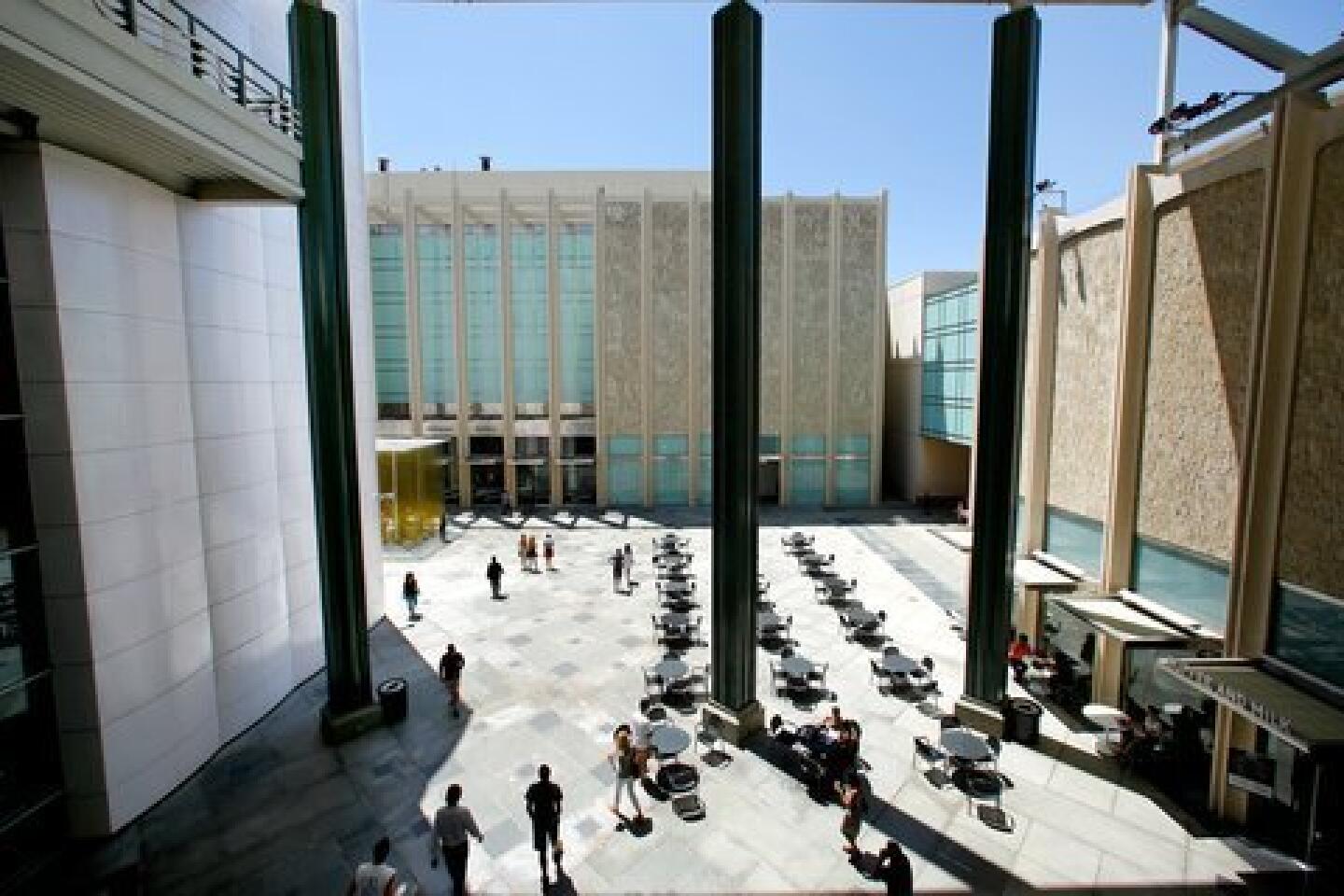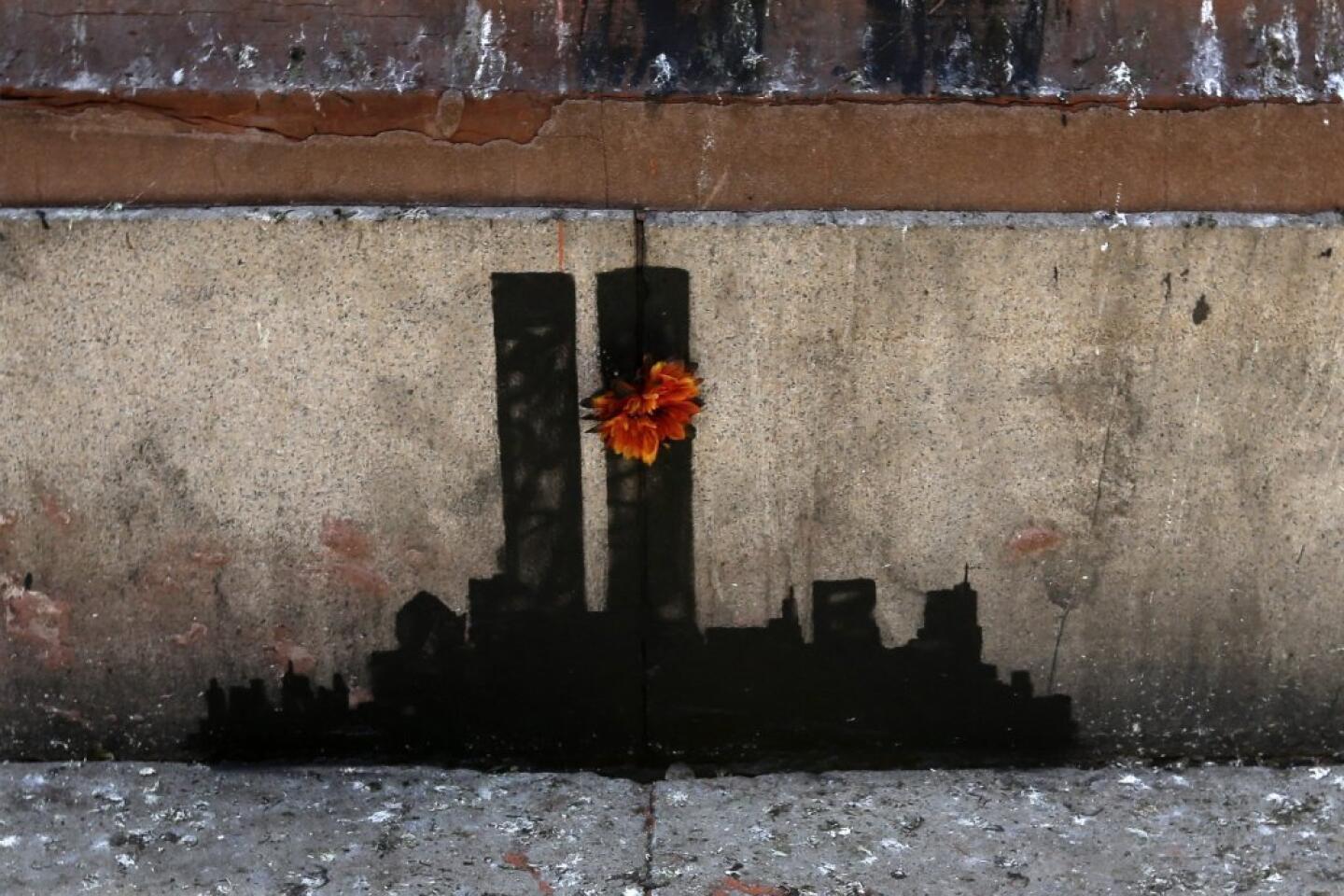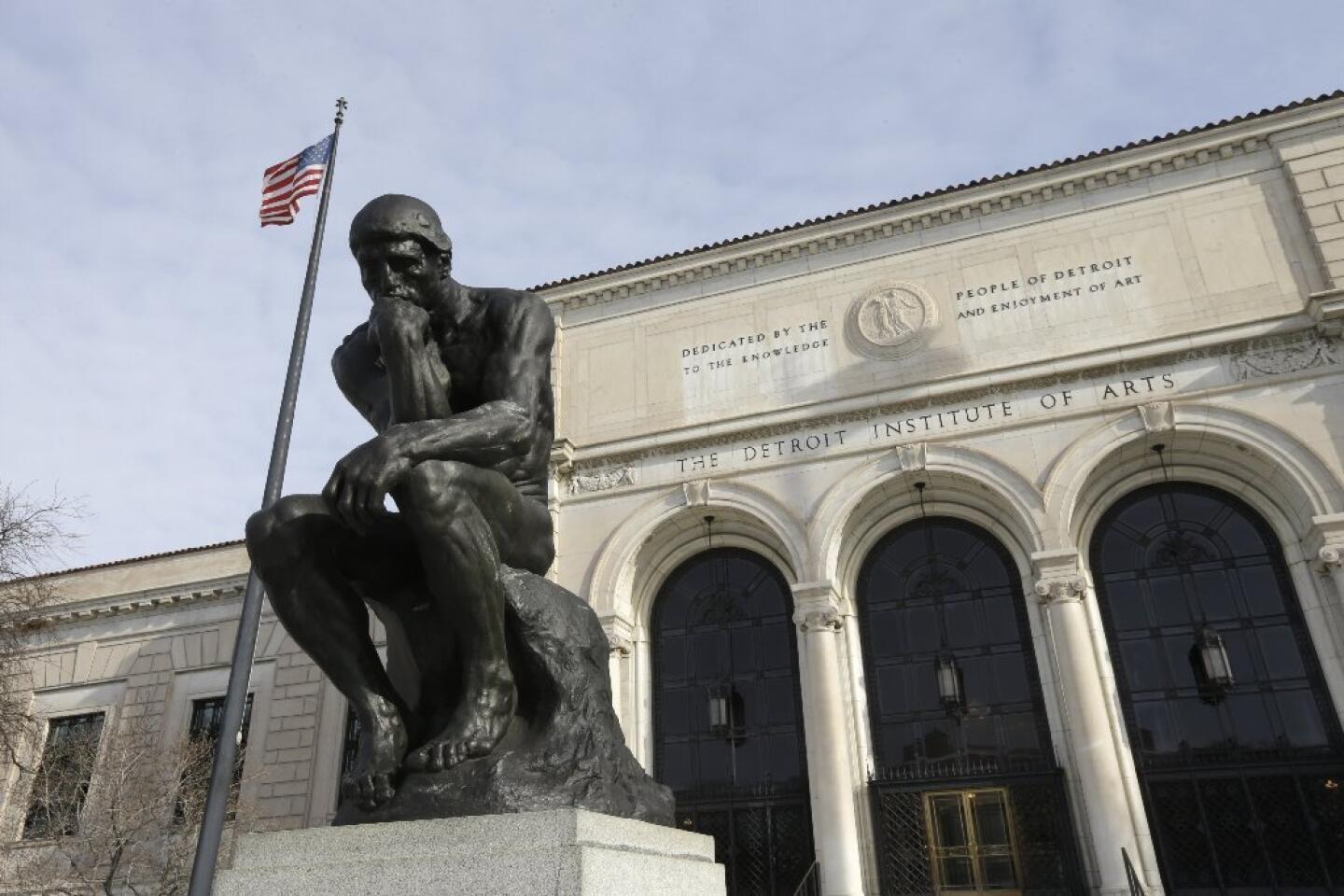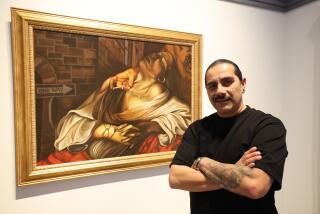Alfredo Ramos Martínez rediscovered Mexico in Los Angeles
For generations, a holy trinity of painter-muralists has loomed over Mexican modern art. Diego Rivera, David Alfaro Siqueiros and José Clemente Orozco, known as los tres grandes, or “the big three,” generally have set the terms for any discussion about what midcentury Mexican art supposedly is, or isn’t.
Even major contemporaries such as Frida Kahlo, Rufino Tamayo and Remedios Varo sometimes have been treated as outliers by the country’s art-critical establishment.
FOR THE RECORD:
Alfredo Ramos Martinez: An article in the Jan. 19 Arts & Books section about artist Alfredo Ramos Martinez described a huipil as a flower basket. It is a tunic commonly worn by Latin American indigenous women. —
But this winter, an exhibition at the Pasadena Museum of California Art will attempt to show how one Mexican artist of lower celebrity wattage, Alfredo Ramos Martínez, crafted his own distinct vision of Mexico’s past and present while residing in Los Angeles between 1929 and 1946.
CRITICS’ PICKS: What to watch, where to go, what to eat
Born in Monterrey and trained in Europe, Ramos Martínez shows influences stretching from indigenous Mesoamerican art to the pastel sumptuousness of the French Impressionists and the translucent, elongated figures of El Greco. Over his career, he staked out a position that straddles genres and transcends the social and cultural borders between Mexico and the United States that persist to this day.
“The border has such a connotation now [as] this militarized zone, as a site that has inspired amazing political art,” says Amy Galpin, the show’s curator and curator of the Cornell Fine Arts Museum at Rollins College in Florida.
But in the first half of the 20th century, Galpin says, many U.S. and Mexican artists “moved back and forth across the border” to work and live. The Big Three all painted murals in the United States, while U.S. artists such as Edward Weston and Pablo (née Paul) O’Higgins spent fruitful time in Mexico. “But it’s not new that artists are moving back and forth across the border. And Ramos Martínez is a product of all these diverse experiences.”
Ironically, the rising prominence of Rivera and Siqueiros spurred Ramos Martínez’s fateful decision to move his family to Los Angeles in 1929, one week before the stock market crash that triggered the Great Depression. Ramos Martínez had been a revered figure as an artist, arts educator and director of the country’s influential Open Air School of painting (where Siqueiros was one of his students).
But after the bloody Mexican Revolution of 1910-20 ended, European cultural traditions were rejected in favor of the new ruling party’s nationalistic ideology. “Despite his commitment to a new identity for Mexico,” Galpin writes in her doctoral dissertation, “Ramos Martínez lost the power struggle with Rivera and his contemporaries in the fight to steer modernism in Mexico.”
PHOTOS: Arts and culture in pictures by The Times
Although the artist would return twice to Mexico to work on mural commissions, he spent the rest of his life in his adopted United States.
“Picturing Mexico: Alfredo Ramos Martínez in California” offers the first comprehensive look by a museum at the work the artist produced during his time in California, including paintings and mural frescos. Among the latter works (although it’s not physically present in the show) is an exuberant depiction of the Oaxacan indigenous celebration called Guelaguetza, commissioned for the home of Hollywood screenwriter Jo Swerling.
More boldly experimental in its scale, ecstatic religiosity and synthesis of European and Mexican styles was his spectacular mural cycle for a Santa Barbara cemetery chapel. A three-dimensional testament to the artist’s personal faith, it comprises a procession of monks, nuns and multi-ethnic women sweeping across the interior, alongside poignant groupings of suffering souls being comforted by the extended hands of a supremely benign Christ of Peace — all seamlessly folded into the building’s architectural contours.
A fragment of that mural will be installed in the Pasadena show, which consists of 73 works.
His other signature large-scale projects included a lighthearted vision of inebriated revelry for the Bar Andaluz of the former Hotel Riviera del Pacifico in Ensenada; and murals for the church of Mary, Star of the Sea in La Jolla and the Avenida Café in Coronado, both begun in the late 1930s.
Although he shared the tres grandes’ fascination with Mexican indigenous culture, Ramos Martínez didn’t fully develop it in his imagery until he moved to the United States. Yet instead of his famous colleagues’ characteristic color palette (ice-blue, iron-gray, volcanic red), and the bulging muscularity of their male figures, Ramos Martínez typically opted for gentle pastels and pacific, less overtly political imagery.
Generally, he eschewed the left-leaning politics associated with post-revolutionary Mexican muralism. An exception was the series of crayon drawings he made of Mexican workers, rendered on actual front pages of the Los Angeles Times, suggesting the gulf between the hardscrabble lives of migrant laborers and the super-abundance of their new U.S. home.
Like Vincent Van Gogh, the well-born Ramos Martínez came to identify with peasants and often used them as subjects. The proto-Modernist Nicaraguan poet Rubén Darío, whom the painter befriended while living in Paris, observed that Ramos Martínez was “one of those who paints poems; he does not copy, he interprets; he understands how to express the sorrow of the fishermen and the melancholy of the villages.”
Often his portrayals were unabashedly idealized: monumental heads of indigenous women going to the marketplace bearing traditional huipiles (flower baskets); the wistful folkloricism of “The Charros In the Village” (1941), which belongs to the San Diego Museum of Art. “That’s the type of work he wasn’t making in Mexico,” Galpin says. “And I think part of that is the distance and the sense of memory and longing.”
The other motivation behind such work was shrewd economic calculation — peasantry imagery sold well with U.S. collectors.
Ramos Martínez left a final mural project for Scripps College in Claremont incomplete when he died in 1946. In a way, too, his critical reputation has been left incomplete, despite a number of exhibitions in recent years at Louis Stern Fine Art in Los Angeles and the National Museum of Art in Mexico City.
Some critics still dismiss Ramos Martínez as an apolitical throwback, a painter of pretty ladies who doesn’t fit within the dominant Modern art master-narratives. But Galpin believes it’s his very hybrid-ness and idiosyncrasy that make him worth our attention now.
“Our history so often focuses on a few individuals, and in the case of Mexican Modernism we know who they are,” she says. “One of the important parts of this story ... is that [it] is much richer and wider than just a few people.”
More to Read
The biggest entertainment stories
Get our big stories about Hollywood, film, television, music, arts, culture and more right in your inbox as soon as they publish.
You may occasionally receive promotional content from the Los Angeles Times.













